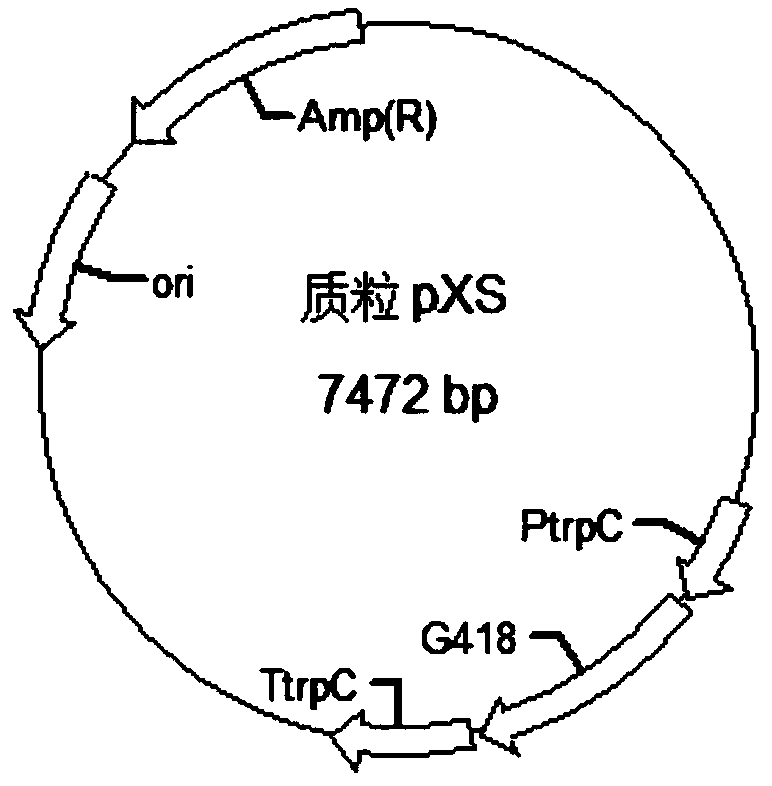Method for improving extracellular pigment of Monascus
A technology of Monascus mold and pigment, applied in the field of genetic engineering, can solve the problem of low yield of extracellular pigments of Monascus
- Summary
- Abstract
- Description
- Claims
- Application Information
AI Technical Summary
Problems solved by technology
Method used
Image
Examples
Embodiment 1
[0041] 1. Construction of the binary plasmid expression vector of Monascus_07017 gene deletion mutant strain of Monascus purple
[0042] (1) using software to analyze the sequence shown in SEQ ID No: 1;
[0043] (2) Using the cDNA of Monascus purple as a template, 7017-up-osc-F (sequence is SEQ ID No: 2), 7017-up-osc-R (sequence is SEQ ID No: 3) as a pair Primer and 7017-dn-osc-F (sequence is SEQ ID No: 4), 7017-dn-osc-R (sequence is SEQ ID No: 5) are a pair of primers to carry out PCR amplification respectively to obtain the 5' of Monascus_07017 gene and 3' homology arm fragments, see figure 2 ;
[0044] (3) Plasmid pXS (donated by the research group of Professor Liu Tiangang of Wuhan University, see the plasmid map for details figure 1 ) as a template, G418-osc-F (sequence is SEQ ID No: 6), G418-osc-R (sequence is SEQ ID No: 7) as a pair of primers for PCR amplification to obtain the G418 gene fragment.
[0045] (4) Using Overlap PCR technology, using the 5' and 3' homo...
PUM
 Login to View More
Login to View More Abstract
Description
Claims
Application Information
 Login to View More
Login to View More - R&D
- Intellectual Property
- Life Sciences
- Materials
- Tech Scout
- Unparalleled Data Quality
- Higher Quality Content
- 60% Fewer Hallucinations
Browse by: Latest US Patents, China's latest patents, Technical Efficacy Thesaurus, Application Domain, Technology Topic, Popular Technical Reports.
© 2025 PatSnap. All rights reserved.Legal|Privacy policy|Modern Slavery Act Transparency Statement|Sitemap|About US| Contact US: help@patsnap.com



